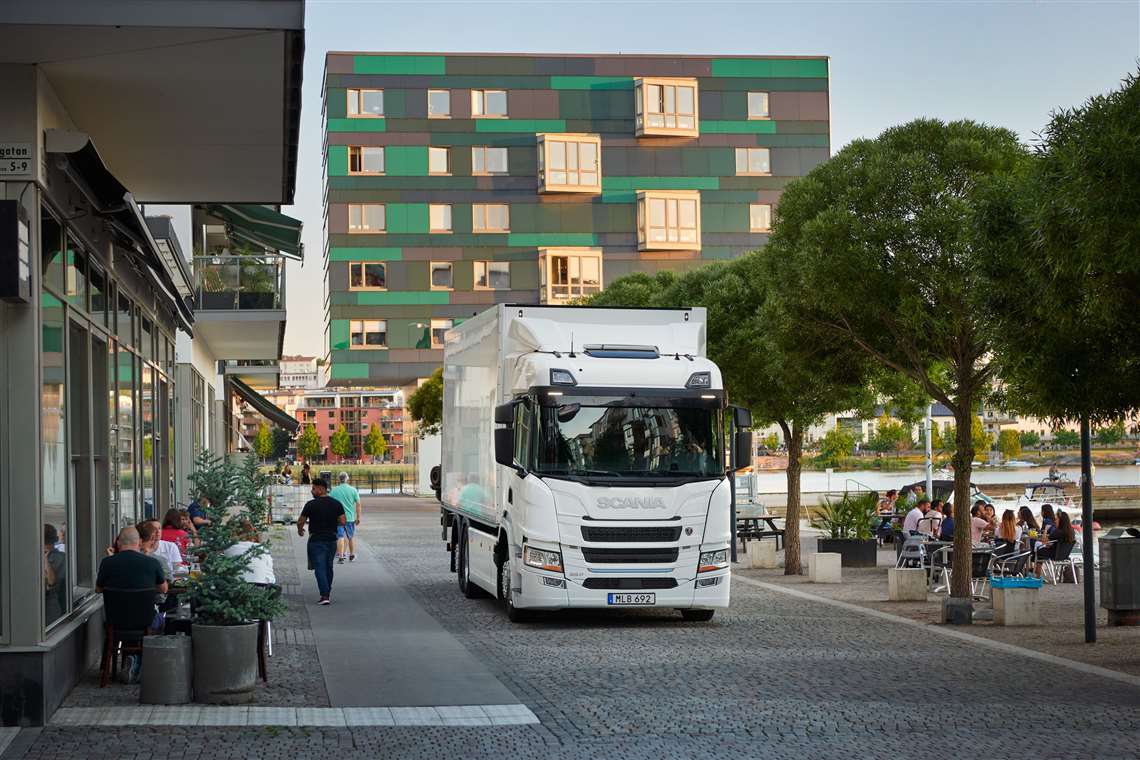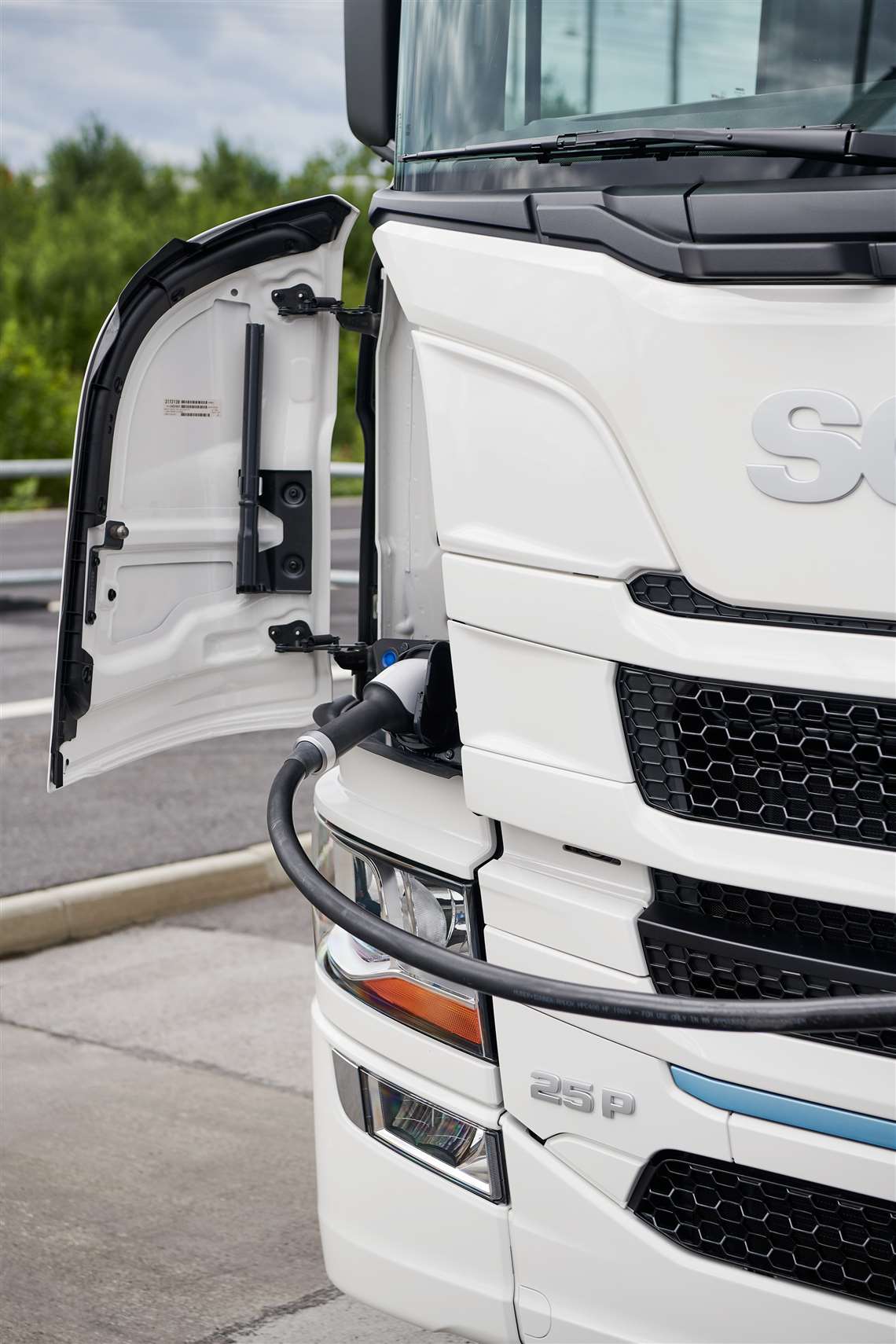Scania publishes life cycle assessment of BEVs
14 June 2021
 Scania recently conducted a life cycle assessment of distribution vehicles that concluded that battery electric vehicles were more beneficial to the environment than those driven by internal combustion engines.
Scania recently conducted a life cycle assessment of distribution vehicles that concluded that battery electric vehicles were more beneficial to the environment than those driven by internal combustion engines.
Scania, a global player in the heavy commercial vehicle industry, has published a life cycle assessment (LCA) of distribution vehicles that concludes that the environmental impact of battery electric vehicles is significantly lower than that of a vehicle with an internal combustion engine.
The LCA is an ISO 14040/44 method to calculate the environmental impacts of products, covering the entire life cycle from cradle to grave, starting at the extracting and refining of raw materials and ending at the recovery of the vehicles. The functional unit used in this study was 500,000 km driven in a representative distribution cycle with an average payload of 6.1 tons
 Scania’s life cycle assessment covering the entire electric vehicle life cycle from cradle to grave, starting at the extracting and refining of raw materials and ending at the recovery of the vehicles.
Scania’s life cycle assessment covering the entire electric vehicle life cycle from cradle to grave, starting at the extracting and refining of raw materials and ending at the recovery of the vehicles.
“As the heavy commercial vehicle industry converts into a higher share of battery electric vehicles, we have to ask ourselves, are the battery electric vehicles truly good for the environment when we look over the full life cycle?” said Andreas Follér, head of Sustainability at Scania. “The impact generated is not from the tailpipe emissions, so the industry needs to rethink what we mean by environmental impact. With this study, we have the clear answers.”
The production of the battery electric vehicle entails a higher environmental impact, mainly due to energy intensive battery cell manufacturing. Despite the increased production burden, the total life cycle impact on climate change is dramatically better for the battery electric vehicles, thanks to the much lower carbon impact from the use phase.
For trucks operating in EU, the study reduced life cycle carbon emissions by 38% (EU mix 2016) to 63% (prognosed EU mix 2030). When switched to green electricity, the LCA reaches a carbon emission reduction over the life cycle of 86%. The battery electric vehicle has the potential to have less climate impact than the one with an internal combustion engine already within one or two years of operation.
The battery cells stand for a bit over 40% of the carbon emissions coming from production of battery electric vehicles. There is however a large potential for improved emissions levels from the production of battery electric vehicles as the battery industry continuously decarbonises and the use of green electricity continuously increases.
“We expect that the total cost of operation for the majority of our customers will be positive for battery electric vehicles during this decade and half our volumes might well have an electric driveline by 2030,” said Follér. “The race towards zero emissions will be about decarbonizing the processes and materials needed to assemble the future truck and buses.”
STAY CONNECTED




Receive the information you need when you need it through our world-leading magazines, newsletters and daily briefings.
POWER SOURCING GUIDE
The trusted reference and buyer’s guide for 83 years
The original “desktop search engine,” guiding nearly 10,000 users in more than 90 countries it is the primary reference for specifications and details on all the components that go into engine systems.
Visit Now
CONNECT WITH THE TEAM









